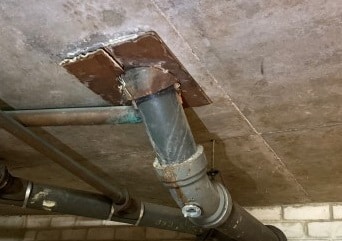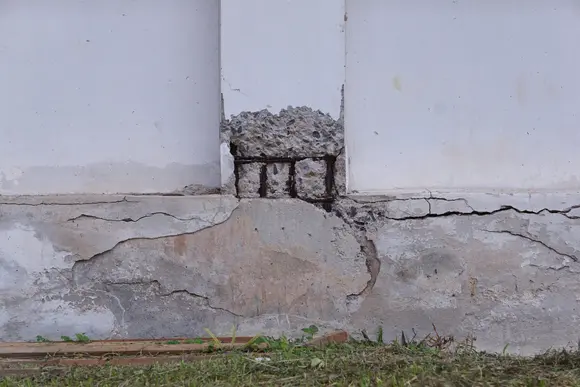Building defects are one of the most common sources of disputes between builders, contractors, and property owners, often leading to legal proceedings. In these cases, expert witness reports are presented to provide evidence of the magnitude of the building defect and the recommended course of action.
Understanding the importance of these proceedings and their components is essential, which is why in this post we’ll break down everything you need to know about expert witness reports for building defects, their role in NCAT cases, and the proper use of Scott schedules.
In Australia, statutory warranties provide legal protection to homeowners, ensuring that builders are responsible for addressing defects within specified timeframes. These warranties cover minor defects for up to two years and major defects for up to six years from the date of building completion.
Understanding these warranty periods is critical for property owners and builders since they dictate when defects must be identified and rectified. Building inspection reports are essential in assessing whether the defect is still within the warranty period, which allows owners to seek remediation or pursue legal action.
Building defects can be classified as ‘minor’ or ‘major’, depending on the severity of the issue and how it impacts the integrity of the building. Each one has specific characteristics:
Minor defects are typically cosmetic or superficial issues that don’t significantly affect the building’s structure or performance. Some of these include hairline cracks in walls or ceilings, peeling and discoloration, small-scale water damage, and non-functional fittings like loose door handles and broken tiles.
These defects don’t compromise the safety of the building, however, Australian law requires that all minor defects must be rectified within two years after construction is over.
As for major defects, these refer to issues that have a direct impact on the structural integrity of the building. These defects can compromise the building’s safety and durability and are seen as a considerable risk to occupants.
Some examples of this include structural cracking, leaking roofs or waterproof failures (which can lead to significant water damage), inadequate foundation construction, and faulty electrical wiring or plumbing.
These defects must be repaired within six years after construction is over, under the statutory warranty for major defects.
MJ Engineering Projects has a skilled team of construction inspectors trained to identify minor and major defects in Class 2 buildings according to the law and can create a building inspection report with all the information necessary for a legal proceeding.
Expert witness reports, also known as building defects expert witness reports, are key pieces of evidence in legal disputes. They are prepared by qualified inspectors, engineers, or architects, and used to support claims about the cause and severity of defects.
These reports are used in NCAT cases to present an unbiased, expert opinion about the compliance of construction work according to building standards and regulations.
Let’s take a look at the components of an expert witness report:
– Overview of the building defect: A detailed description of the defect, including where it is located and how it looks.
– Cause of the defect: An analysis of what caused the defect (poor workmanship, design flaws, use of substandard materials, etc).
– Extent of the damage: A thorough assessment of the impact of the defect on the building’s structure and whether it should be considered a risk for occupants.
– Recommended remediation: A suggested course of action for fixing the defect that includes an estimate of the costs involved.
Building reports must follow strict requirements to be considered in legal proceedings. This ensures their accuracy, thoroughness, and impartiality. At MJ Engineering Projects, we provide litigation-compliant reports that can support claims in dispute resolution.
A Scott schedule is a document submitted to a court that details the nature of the defect, the respondent’s response, and the expert’s opinion. The purpose of the schedule is to allow the tribunal to assess each defect individually, rather than analysing all the evidence, which simplifies the process.
Here are the components of a Scott schedule (which are presented in a table format, hence the name schedule):
– Defect description: A clear and detailed description of the defect.
– Claimant’s position: Stance of the property owner on the defect (often supported by expert witness reports).
– Respondent’s response: Defence or explanation of the builder/contractor regarding the defect.
– Expert witness comment: An expert’s opinion on the defect, its cause, and the required course of action.
– Estimated costs: A breakdown of the estimated costs associated with repairing the defect. This helps determine the amount of compensation if required.
Having an expert building inspection report to support each entry in the Scott schedule is important to strengthen the property owner’s claims and provide the tribunal with the evidence needed to reach a fair decision.
A Scott schedule cannot be prepared without a thorough building dispute inspection first. This inspection involves examining the property in detail to identify and document all the alleged defects. Dispute inspections are essential in cases that involve Class 2 buildings (multi-unit residential buildings) where defects must be identified within the mandatory warranty periods.
An inspector conducting the building inspection will:
– Visually Inspect structural elements, including the foundation, walls, roof, and any other that may impact the building’s integrity.
– Ensure that the construction complies with the relevant Australian standards and the National Construction Code.
– Identify poor-quality workmanship and any substandard materials that may have contributed to the defect.
– Provide a detailed building inspection report.
When dealing with building defects, expert witness reports and Scott schedules are critical in resolving NCAT disputes. MJ Engineering Projects offers specialised building inspection services that ensure Class 2 buildings are thoroughly assessed within the required warranty period.
Our litigation-compliant reports and professional expertise provide homeowners with the necessary support to resolve legal disputes efficiently and effectively. For more information, don’t hesitate to contact us.

While quality is undeniably crucial, an efficient and cost-effective waterproofing project relies on a number of factors, not solely limited to high-quality workmanship.

While the cost of waterproofing may constitute only 2% to 5% of a building’s total expense, it’s noteworthy that flawed waterproofing can account for nearly 80% of all construction-related problems.

A remedial engineer is an engineer who specialises in repairing structures and land that have failed or been damaged, and pose a danger to people and property.